Tagebuch
Diary
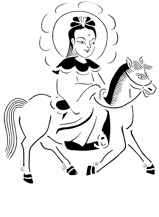
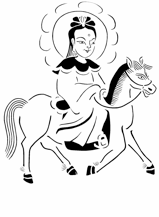

Tagebuch
Diary

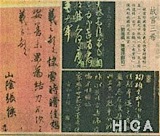
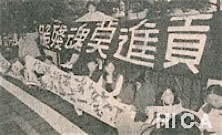
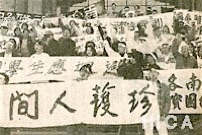
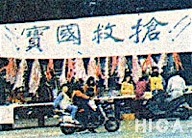
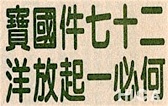

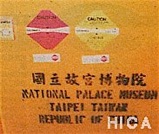
The long march of delicate inks
1996


HICA

When I visited my parents in my native country, Taiwan, in January 1996, the following significant event happened.
As a diplomatic move during the presidential election, the president of Taiwan decided to confer the valuable palace art collection of the Palace Museum in Taipei to the USA. The collection included 27 objects that were not suited for the exhibition because of their very old and fragile condition, and it had even been prohibited to display them in Taiwan.
The population objected vehemently against this conferment. As an expert for art and as an restorer, I got involved in this protest initiated by the citizens and miscellaneous artist’s associations.
In the end almost 1 million people protested against the conferment. As a consequence, the government retained 23 objects of those that were not allowed to be exhibited in Taiwan, as these doubtlessly wouldn’t have survived the journey. 425 objects on the whole, however, had been conferred to America.
Just at that time, China threatened the Taiwanese with a rocket fire. As an act of defiance, the people elected president Lee again for the presidential office. He had become widely unpopular because of the conferment of the palace art collection.
The long march of delicate inks
For the first and perhaps for the last time: art treasures from Taipei in the Metropolitan Museum
Madame Chiang Kai-shek was one of the first. She appeared in the Metropolitan Museum before the official opening, ninety-one years old and surrounded by a small entourage of museum directors, curators and security personnel, in order to view those art treasures that her husband had rescued (or as the mainland government would put it: “stolen”) almost fifty years ago when he fled to Taiwan to escape the Communists.
Even then, the collection, which comprises more than seven hundred thousand items, had a rather notable odyssey behind it. Accumulated by China’s rulers over well-nigh four millennia, unseen by a single member of the public for a thousand years, the collection remained in the hands of the last Emperor until he was expelled from the Forbidden City in 1924. In 1925, the Palace Museum was founded in Beijing, and some of the art treasures were put on show for the very first time. Only ten years later, when the Japanese invaded Manchuria, everything was packed up again in 20,000 wooden crates, and sent to Shanghai, later on to Nanking, and from there, over rivers, up and down mountains, to one refuge after another, until at the end of the Second World War the collection finally arrived in Nanking again. When the Communists were approaching the city, and Chiang Kai-shek had to flee, he simply took the treasures with him. Since 1965, they have been housed by the Palace Museum in Taipeh, and almost ever since the People’s Republic of China has been demanding their return.
Some days after Madame Chiang Kai-shek came the crowds. Three and a half thousand people thronged the dimly lit galleries on the opening day, a rain-swept Tuesday, in order to admire perforated jade disks from the Neolithic period, drinking vessels from the Chou Dynasty, Ju porcelain, bamboo carvings, treasure-chests from the late Ch’ienlung Empire, and above all the paintings and calligraphic scrolls from the era of the Tang Dynasty, which even at the Palace Museum in Taipeh are seldom exhibited in this abundance. This is because the collection amassed by China’s rulers, most of it safely stored in bombproof cellars cut deep in the living rock, where it is professionally looked after and guarded, simply does not travel, not even in Taiwan. Not normally, anyway, and not without triggering protests that may escalate to the point of hysteria. Finally, in the eyes of many Taiwanese, the Palace Museum houses part of the national heritage. And that is not something you lend out. So it’s a diplomatic tour de force that these masterpieces were allowed to journey to America at all.
An accomplishment indeed, due primarily to the Professor of Archaeology and Art in Princeton and President of the Asiatic Art Department at the Metropolitan Museum, Wen C. Fong. Following long years of preparatory work, during which Fong convinced the Taiwanese government that in its indeterminate political status the country had to deploy art as a communicator as well as its economic clout, the agreements between the Metropolitan Museum and the Palace Museum were signed in 1994. The government in Taipeh even wanted to bear half of the exhibition’s costs, a not inconsiderable 3.1 million dollars. But instead of constituting a gigantic advertising coup for Taiwan, the exhibition stirred up a whole lot of trouble for everyone involved.
When it became known in Taiwan that four hundred and seventy-five of the most important Chinese artworks were to be sent to America, the first protests were voiced; some sponsors immediately withdrew their funding. And when it emerged that the works on loan were set to include twenty-seven masterpieces that have been classified as particularly endangered, and for this reason are on show in Taipeh only every forty days, the critical voices swelled to a resounding chorus. Other sponsors jumped ship: some of them, so rumour has it, because of the protests in Taiwan (like Acer America), some of them, like Citibank, in response to pressure from Beijing, where there were also protests, of course.
For a long time, it looked as though the show was never going to take place at all, because now the politicians, above all the “New Party” opposition, began to launch vehement attacks on the exhibition. A rumour was circulating in Taipeh that President Clinton was planning to give the artworks back to the People’s Republic, or the Metropolitan was intending to steal the originals and send back reproductions. Finally, a committee of inquiry was convened, tasked with deciding whether each individual object should be allowed to travel or not.
Verena Lücken
Frankfurter Allgemeine Zeitung, Feuilleton, March 26th, 1996 NEW YORK
Thirty-six (or by another count twenty-three) of the works originally promised had to remain in Taipeh: specialists will particularly miss the landscapes from the Sung Period (960 to 1279), which for Chinese art is roughly equivalent in importance to the Renaissance’s impact on Western art. Among the missing works is Kuo Hsi’s picture entitled “Prelude to Spring”, the cover picture on the sumptuous catalogue.
It’s also a compromise that none of the particularly endangered works may be exhibited for longer than forty days – the maximum time they are on show in the Palace Museum itself. Some of the artworks, many hundreds or even thousands of years old, particularly the calligraphic scrolls and ink drawings on silk and paper, are actually so sensitive to light that they have to be rotated with other exhibits.
Why Beijing protested is not hard to comprehend. But the rationale behind the protests in Taiwan is difficult to explain even for experts. The past few years of national rejuvenation, a process that has now led to the first democratic elections, has seemingly gone hand in hand with a profound crisis in the self-image of the Taiwanese people. Whose past the treasures of the Palace Museum represent, how Chinese the Taiwanese are, whether their history is actually stored in the rock-hewn cellars, and what it has to do with the future, and what kind of future, indeed, this will be: these are some of the questions aired in the protests.
The public in New York can merely take note of this. What they can see, by contrast, is a collection of overwhelming beauty, some of its almost impossible for Westerners to fully appreciate. Once again, the most difficult category to responsively comprehend is the calligraphy, whose development from strictly formal modes to resplendently dramatic expressiveness the exhibition so magnificently showcases.
Anyone unfamiliar with the history of Chinese art (presumptively the majority of the visitors) still has an opportunity to recognise quite a few masterpieces among the approximately 450 exhibits, such as a scroll, more than six metres long, entitled “Life in the Fuch-Ch’un Mountains” painted by Huan Kung-Wang in the mid-14th century, in the era of the Yuan Dynasty: a landscape with sparingly ink-drawn lakes, mountains, trees in Taoist tranquillity. Maxwell Hearn writes in the catalogue that in this picture “nature has become a metaphor symbolising the artist’s ego”, and the landscape “a mirror image of his own inner world”.
Even a cursory tour reveals how motifs and shapes were repeatedly revived over the course of millennia, initially as ritual objects, then as decorative artworks, made of bronze, jade, porcelain or bamboo, until finally they recur as miniatures or minuscule copies in aesthetically crafted treasure-chests from the 18th century. The Chinese art treasures have hitherto been seen in the West only twice: the Royal Academy of Arts was the first, in London back in 1935/36, to showcase the collection. Almost 30 years later, in 1961/62, even before the Palace Museum in Taipeh was inaugurated, another selection travelled through the United States. The ongoing exhibition, which is now traversing the North American continent for a year, will most probably be the last.
VERENA LÜCKEN Metropolitan Museum of Arts, New York, until 19 May. Catalogue in Hardback 35 $, Paperback 25$ “Possessing the Past”, the comprehensively complementary publication by Wen C. Fong and James C. Watt, costs $ 85. A CD-ROM with illustrations of almost all the exhibits, plus commentaries and landscapes, costs $ 19.95. From the end of June, the exhibition can be seen in Chicago, in the autumn in San Francisco, and in early 1997 in Washington. The project of lending art treasures from the Palace Museum in Taipeh to America was a political issue in Taiwan. In the election campaign, the government was accused of attempting to ingratiate themselves with the Americans, and putting the cherished national cultural heritage at risk.
In actual fact, some of the artworks that Chiang Kai-shek had taken with him in 20,000 wooden crates when he fled to Taiwan are extremely endangered, so that in Taipeh they are put on show only for a brief period every few years. As a diplomatic compromise, a selection of artworks was finally arrived at, which can now be admired in New York. F.A.Z.